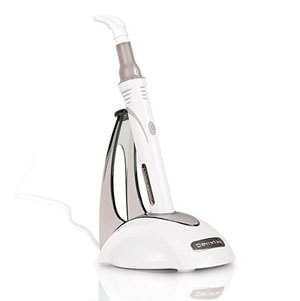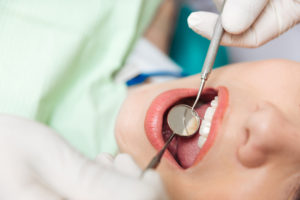Partial dentures are made to fill in gaps that result from missing teeth. They are designed using a nylon, plastic, or metal plate with the teeth attached to it. Normally, the denture is attached to your natural teeth using metal clasps that keep it in place. In another instance, the partial denture may have a metal framework that connects to your teeth. They can be easily removed or unclipped.
Partial dentures help protect your remaining teeth from weakening or shifting. It also keeps you from overusing one side of your mouth, which could cause damage and wear.
You have two partial denture options to choose from:
Removable Partial Dentures
These dentures are removable, and you don’t need to always be in them.
- Cast metal partial denture: Consists of an acrylic base, gum-colored false teeth held in place by clasps. The clasps can be made of metal, clear or pink plastic. This denture has a high level of stability, light in weight, and is resistant to plaque buildup.
- Flexible partial denture: These dentures are made of flexible plastic and have a highly aesthetic look. They easily blend in with gum tissue and natural teeth. Flexible partial dentures are ideal for patients who have an allergic reaction to acrylic.
- Acrylic partial denture: These dentures are a temporary option made of plastic replacement teeth, an acrylic base, and metal clasps. They are the least expensive and aren’t very comfortable. They also aren’t durable.
Fixed Partial Dentures
These are non-removable dentures that are surgically inserted into the jawbone. They are also known as bridges. Some types of the fixed partial dentures include:
- Traditional bridge: They are mainly made of porcelain fused to metal, ceramic, or metal like gold. The traditional bridge utilizes fake teeth on either side to hold it in place.
- Cantilever bridge: Similar to the traditional bridge, the cantilever bridge only utilizes fake teeth on only one side for support.
- Implant-supported bridge: These are entirely supported by dental implants.
- Maryland bridge: These bridges are made of gold or porcelain, and they have wing-like features that attach them to adjacent teeth.
Who are they for
Partial dentures are for anyone with a few missing teeth due to either an accident or tooth decay.
Benefits of partial dentures
- It is a less invasive procedure.
- It prevents teeth from moving when spaces are left in between them.
- It mitigates the effects of missing teeth, such as gum disease and tooth decay due to plaque accumulation and food packing in the tooth gaps.
Care and maintenance
- Remove and run water over the dentures after eating to remove food debris and loose particles.
- Clean your teeth after removing the partial dentures using a soft bristle brush.
- Handle the dentures carefully to avoid damage when cleaning them.
- Most dentures need to stay moist, and it is advisable to soak them overnight.
















